
A set of unusual and wonderfully unpredictable electroacoustic improvisations recorded live at the Akustronik#18 concert at Projektraum Streitfeld (Munich) in 2017 from the trio of Udo Schindler performing on reeds, brass & analogue synthesizer; Gunnar Geisse performing on laptopguitar & virtual instruments; and Anton Kaun performing on electronics, zeug & effects.
In Stock
Quantity in Basket: None
Log In to use our Wish List
Shipping Weight: 3.00 units
EU & UK Customers:
Discogs.com can handle your VAT payments
So please order through Discogs
Sample The Album:
Udo Schindler-reeds, brass, analogue synthesizer
Gunnar Geisse-laptopguitar, virtual instruments
Anton Kaun-electronics, zeug, effects
Click an artist name above to see in-stock items for that artist.
UPC: 7480797468
Label: FMR
Catalog ID: 536-0519
Squidco Product Code: 27816
Format: CD
Condition: New
Released: 2019
Country: UK
Packaging: Digipack - 3 panel
Recorded live at Projektraum Streitfeld, in Munchen, Germany, on June 9th, 2017, by Udo Schidnler.
A set of unusual and wonderfully unpredictable electroacoustic improvisations recorded live at the Akustronik#18 concert at Projektraum Streitfeld (Munich) in 2017 from the trio of Udo Schindler performing on reeds, brass & analogue synthesizer; Gunnar Geisse performing on laptopguitar & virtual instruments; and Anton Kaun performing on electronics, zeug & effects. Schindler's reed work is the most identifiable element in their electronic brew, with extended technique and an idiosyncratic gate that takes his horn in varying direction, as Geisse and Kaun surround him with a diverse set of sonic environments, generally active and downright pugilistic at times, Geisse perhaps the most identifiable through his laptopguitar, occasionally sounding like, well, a guitarist, but rarely in a traditional role. In fact, there is little of convention from any of the three players, as they challenge and surprise each other while still presenting a coherent, albeit bizarre, dialog for their audience. Wild.
See also GauSee also this superGauArtist Biographies
• Show Bio for Udo Schindler "Udo Schindler is a German improvisation musicians (bass clarinet, contrabass clarinet, saxophone, flute, cornet, also accordion, guitar, percussion, analog synthesizer) and architect. Schindler was active in the 1970s in Franconia first as rock and rock jazz musician before he had flute lessons at the conservatory Nuremberg. Subsequently, he studied architecture at the Technical University of Munich and worked as an architect. In the 1990s he turned to contemporary music (Arch.Ensemble) and improvised music (Schindler.Interferenz.3). In addition to the single tube instruments (saxophones and clarinets), he studied the cornet. In addition to his sound research, he also worked as a director, performer, musician and composer for various theater productions. In the following years he performed with solo and duo projects at new music festivals (Musica Viva, Klangaktionen, etc ...), jazz, experimental music, among others. This led to collaborations with musicians like Hubert Bergmann, Gerry Hemingway, Eddie Prevost, Sebi Tramontana, Georg Wissel, John Russell, Blaise Siwula, Frank Gratkowski, Hans Koch, Urs Leimgruber, Elisabeth Harnik, Katharina Weber and Frank Paul Schubert. In addition to his activities in solid cast he initiated in Munich a series of concerts to free improvisation in ad hoc to test instrumentation." ^ Hide Bio for Udo Schindler • Show Bio for Gunnar Geisse "Gunnar Geisse (born 11 July 1964, Giessen, Germany) is a musician, improviser, composer, and interpreter. He moves along the cutting edge between experimental/improvised music and new music. He has developed a complex instrumental concept combining guitar and electronics/computer which he calls laptop guitar. He also plays several other string instruments including banjo, mandolin, and a variety of instruments from Central Asia, among them the Uzbek and the Persian dotâr. Gunnar Geisse has been living in Munich, Germany since 1985. Gunnar Geisse began his career in his early youth as a rock guitarist. With the end of his schooling he gravitated in the direction of jazz. Attending an Ornette Coleman concert at the Moers Jazz Festival in Germany, he saw Coleman carried onto the stage in a coffin, jump out dressed in a glittering disco outfit and play in the free jazz style that he helped create. After this key experience, Geisse bought toy plastic saxophones for the members of his band and threw away his original plan to play jazz standards. It was during this time that improvisation and an experimental approach became the foundation of his understanding of music. His first professional engagement was with the "New York Broadway Ensemble" with which he toured throughout Europe for the next two years. For Geisse, to be a part of an orchestra was an essential learning experience. The avant-garde combo "Brother Virus" which along with Geisse included Werner Klausnitzer, Patrick Scales, and Maurice de Martin, achieved fame at the end of the 1980s. It would leave a major impression on Geisse. The band was invited to play at the Knitting Factory in New York, and was one of the first bands to play serious improvised music "live" on prime time German TV - Dagobert Lindlau's "Veranda". With "Brother Virus" Gunnar Geisse took the first steps on his own musical journey, a journey that was already apparent in his earlier development. In 1991 Enja Records released the "Brother Virus" album "Happy Hour". Geisse lost the two middle fingers on his right hand in a mountain climbing accident in 1992. With the severity of the injury and subsequent operations, it was unclear as to whether Geisse would be able to continue his playing career. It was during his hospital stays that he was able to contemplate the implications of 20th century new music compositional techniques, and in so doing discovered his deep interest in structure. He wrote his first composition during one of his hospital stays. For him to have a good aural understanding of the piece, he proceeded to overdub the tracks - some 200 in total. Out of his interest in structure, Geisse worked together with the Institute for Experimental Physics at the University of Magdeburg in the area of complexity theory, non-linear phenomena and simulation, and inserted structural models of nature into his music. The recording was released under the title "AtEM". While judging a music composition competition, Hans Zender - conductor of the SWR symphony orchestra und professor for composition at the College of Music and Arts in Frankfurt, Germany - took notice of Geisse's extraordinary music. Subsequently Gunnar Geisse received a stipend to compose at the prestigious Schloss Solitude Academy for one year. It was at Solitude that he composed "Das diskrete Jetzt" (The Discrete Now). He delved deeper into the phenomena of musical time. On a renewed search for natural structural references, he received important suggestions and impetus from the Institute for Medical Psychology at the Ludwig-Maximilian University (LMU) in Munich on the theme "time and its perception". The classic compositional parameters of tempo, meter, and rhythm are pushed into the background by this broadening of perspective through a psychological perception of time. After his work with structure and time Gunnar Geisse again delved into questions concerning the fundamental functions of harmony. Searching for answers within nature since 2003, he has occupied himself with the non-linear phenomena of combination-tones - these are tones that are formed in the cochlea of the inner ear as an extension of the original acoustic signal. The combination-tones are the missing building blocks which, when added to his use of partial-tone rows and partial-tone matrixes, complete Geisse's set of harmonic compositional tools. The results of this work can be heard on the CD "MEtA" (Creative Sources Recordings). In 2006 Geisse wrote an exposition which lends insight into his specific harmonic concept. Paradoxically, with these compositional tonal explorations, sound-based improvisation and its physical, expressive moments have taken on more and more importance; Geisse's improvisational models have changed under these influences. Since 2005 working with electronics and laptop computers have become an important means of expression for Geisse. In this context he has developed a unique hardware/software set-up (laptop guitar) that allows him to pursue his analogue playing (guitar) on a digital level, and even more importantly, to break away from the restrictions of "instrument" in order to work more directly with sound and its formulation. Gunnar Geisse has received various awards and stipends, including the Musical Achievement Award of the City of Munich, and the Schloss Solitude Academy's Composition Stipend. Gunnar Geisse has played with musicians from the three major areas of his musical life: experimental/improvised music, new music, and contemporary jazz. They include: Richard Barrett, Marty Cook, Phil Durrant, Vinko Globokar, Barry Guy, Franz Hautzinger, Jason Kahn, Thomas Lehn, Michael Lentz, George Lewis, David Moss, Günter Müller, Olga Neuwirth, Phill Niblock, Evan Parker, Giancarlo Schiaffini, Ignaz Schick, Ed Schuller, Mike Svoboda, Gary Thomas, Wu Wei, Xu Fengxia. Gunnar Geisse has worked with or played works of Hans-Jürgen von Bose, John Cage, Peter Maxwell Davies, Fred Frith, Gérard Grisey, Hans Werner Henze, Tom Johnson, Helmut Lachenmann, Anestis Logothetis, Chico Mello, Josef Anton Riedl, Gioacchino Rossini, Dieter Schnebel, James Tenney, Kurt Weill, Jörg Widmann, Christian Wolff, and Udo Zimmermann. He has also played as soloist under the direction of Stefan Asbury, Paul Daniel, Peter Eötvös, Franck Ollu, and Lothar Zagrosek with the Bavarian Radio Symphony Orchestra (BR), The Bavarian State Opera Orchestra, the Stuttgart Radio Symphony Orchestra (SWR), the Stuttgart City Orchestra, and the Munich City Theatre Orchestra on Gärtnerplatz. Gunnar Geisse was/is a member of the following ensembles: Brother Virus, le petit chien, ICI ensemble, Go Guitars, Berlin Jazz Composers Ensemble, Fractal Gumbo, NIE Quartett" ^ Hide Bio for Gunnar Geisse • Show Bio for Anton Kaun Anton Kaun: ^ Hide Bio for Anton Kaun
11/20/2024
Have a better biography or biography source? Please Contact Us so that we can update this biography.
11/20/2024
Have a better biography or biography source? Please Contact Us so that we can update this biography.
"me
1974
childhood
youth
1990
noise
rumpeln
sonytony
kingteledubby
trashcantrasher
video
visulas
art
now"
11/20/2024
Have a better biography or biography source? Please Contact Us so that we can update this biography.
Track Listing:
1. GAU 1 19:30
2. GAU 2 13:23
3. GAU 3 14:56
4. GAU 4 10:53
Improvised Music
Free Improvisation
Electro-Acoustic
Electro-Acoustic Improv
European Improvisation, Composition and Experimental Forms
Trio Recordings
Last Copy of Items that will not be restocked...
Search for other titles on the label:
FMR.


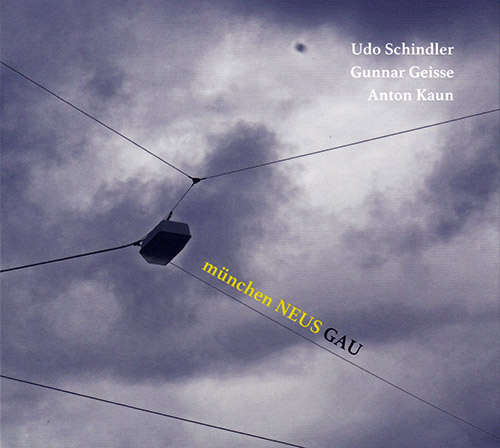

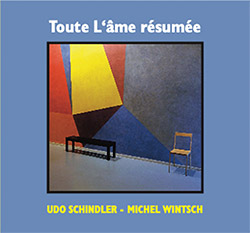



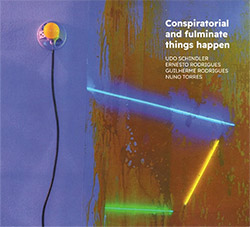
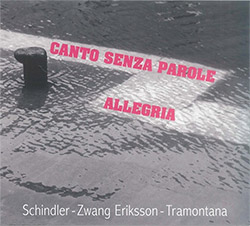

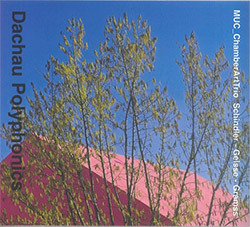

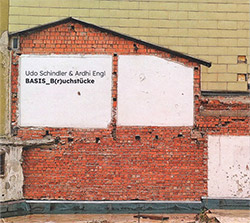
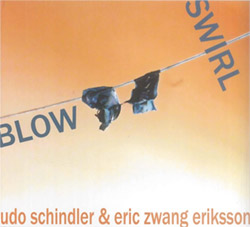
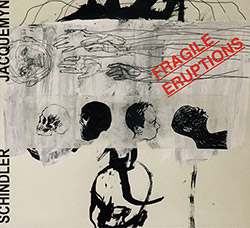


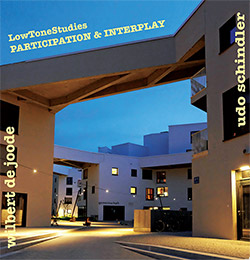

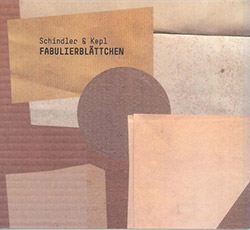
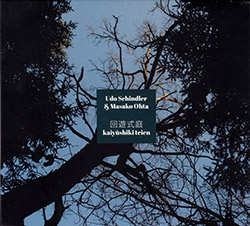
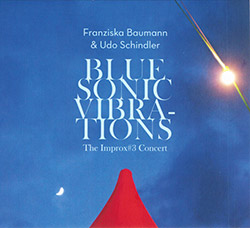
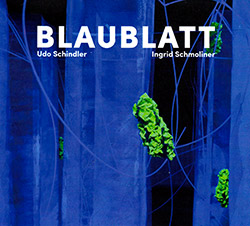

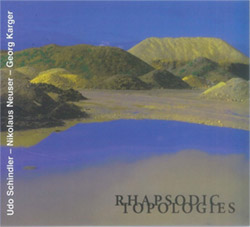


![Guy, Barry / Ken Vandermark: Occasional Poems [2 CDs]](https://www.teuthida.com/productImages/misc4/34849.jpg)
![Novoa / Carter / Mela Trio: Vol.1 [VINYL]](https://www.teuthida.com/productImages/misc4/35236.jpg)


![Elephant9 : Mythical River [VINYL]](https://www.teuthida.com/productImages/misc4/34624.jpg)
![Evans, Peter (Evans / Eldh / Black): Extra [VINYL]](https://www.teuthida.com/productImages/misc4/35279.jpg)

![McPhee, Joe: Straight Up, Without Wings [BOOK]](https://www.teuthida.com/productImages/misc4/35454.jpg)
![Jeck, Philip: rpm [2 CDs]](https://www.teuthida.com/productImages/misc4/35455.jpg)













![Barker / Parker / Irabagon: Bakunawa [VINYL]](https://www.teuthida.com/productImages/misc4/35533.jpg)
![Blaser, Samuel / Marc Ducret / Peter Bruun: Dark Was The Night, Cold Was The Ground [VINYL 10-inch]](https://www.teuthida.com/productImages/misc4/35492.jpg)








![Warren, Kenny (Warren / Hoffman / Ellman): Sweet World [VINYL]](https://www.teuthida.com/productImages/misc4/35451.jpg)




![Blake, Ran / Dave Knife Fabris: Live Amsterdam 2006, First Visit [CD + POSTCARDS]](https://www.teuthida.com/productImages/misc4/35275.jpg)













![DNS: Taking Big Bites Of The Khandas Three Cafes Deep [2 CDs]](https://www.teuthida.com/productImages/misc4/35334.jpg)




![Cleaver, Gerald: The Process [VINYL]](https://www.teuthida.com/productImages/misc4/34966.jpg)




![Alva Noto: HYbr:ID II [VINYL 2 LPs]](https://www.teuthida.com/productImages/misc4/35201.jpg)

![Baron, Derek / Luke Martin: Distinct and Concealed [CASSETTE + DOWNLOAD]](https://www.teuthida.com/productImages/misc4/35079.jpg)

![Lyle, Erica Dawn : Colonial Motels [CASSETTE + DOWNLOAD]](https://www.teuthida.com/productImages/misc4/35080.jpg)









![Sanna, Claudio: Compositori Sardi Contemporanei II [2 CDs]](https://www.teuthida.com/productImages/misc4/35317.jpg)







![Zurria, Manuel: Fame di Vento [3 CDs]](https://www.teuthida.com/productImages/misc4/35167.jpg)

![Granberg, Magnus / Nattens Inbrott / Skogen: Holde Traume, Kehret Wieder! [2 CDs]](https://www.teuthida.com/productImages/misc4/35038.jpg)
![Frey, Jurg: Outermost Melodie [2 CDs]](https://www.teuthida.com/productImages/misc4/35039.jpg)

![Pavone, Jessica: Reverse Bloom [VINYL]](https://www.teuthida.com/productImages/misc4/34895.jpg)




![Modney (Modney / Wooley / Gentile / Roberts / Pluta / Symthe / ...): Ascending Primes [2 CDs]](https://www.teuthida.com/productImages/misc4/34852.jpg)









![Elephant9 with Terje Rypdal: Catching Fire [VINYL 2 LPs]](https://www.teuthida.com/productImages/misc4/35355.jpg)
![Deerlady (Obomsawin, Mali / Magdalena Abrego): Greatest Hits [VINYL]](https://www.teuthida.com/productImages/misc4/34876.jpg)




![Haino, Keiji: Black Blues [2 CDs]](https://www.teuthida.com/productImages/misc4/35109.jpg)



![Surplus 1980: Illusion of Consistency [CD]](https://www.teuthida.com/productImages/misc4/35069.jpg)
![Staiano, Moe: Away Towards the Light [VINYL + DOWNLOAD]](https://www.teuthida.com/productImages/misc4/35037.jpg)



![Caveira (Gomes / Sousa / Abras / Ferrandini): Ficar Vivo [VINYL]](https://www.teuthida.com/productImages/misc4/34643.jpg)
![Gregg, J. J. / David Van Auken: Lunar Prairie [CD w/ DOWNLOAD]](https://www.teuthida.com/productImages/misc4/34611.jpg)

![Coultrain: Mundus [VINYL]](https://www.teuthida.com/productImages/misc4/32439.jpg)
![Mattin: Songbook #6 [VINYL]](https://www.teuthida.com/productImages/misc4/27317.jpg)
![Punkappella: Wake Up [7-inch VINYL]](https://www.teuthida.com/productImages/misc4/17519.jpg)
![Residents, The: WARNING: UNiNC.: Live And Experimental Recordings 1971-1972 [VINYL 2 LPs]](https://www.teuthida.com/productImages/misc4/31521.jpg)
![Coultrain: Phantasmagoria [VINYL]](https://www.teuthida.com/productImages/misc4/30142.jpg)
![Lennon, Sean Ono: Asterisms [VINYL]](https://www.teuthida.com/productImages/misc4/34517.jpg)

![Coley, Byron: Dating Tips for Touring Bands [VINYL]](https://www.teuthida.com/productImages/misc4/17906.jpg)

![Lost Kisses: My Life is Sad & Funny [DVD]](https://www.teuthida.com/productImages/misc4/lostKissesDVD.jpg)